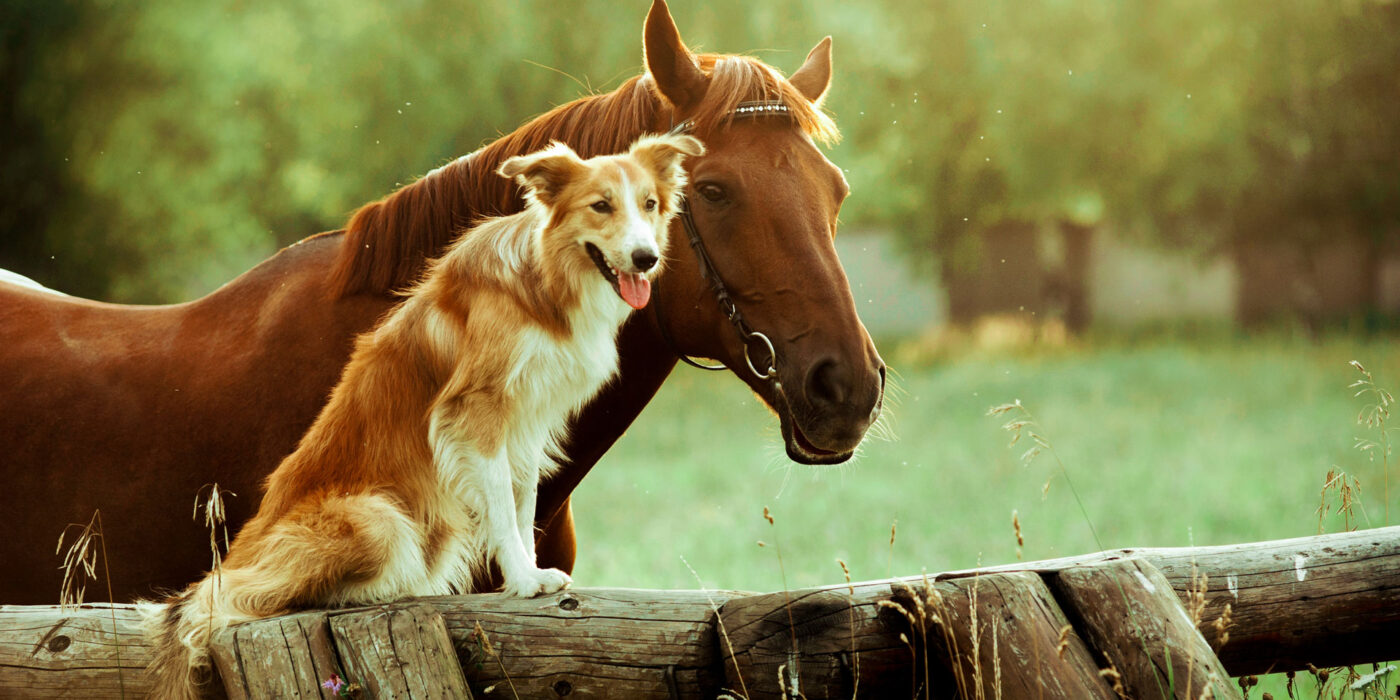Dogs and horses can be quite similar in many ways. They’re playful, they’re thoughtful, they make great companions and really become part of the family. There are some interesting ways in which they differ behaviourally though which is why we can’t assume a dog and a horse will demonstrate that they are in pain to you in the same ways.
A short while ago I wrote a blog about subtle ways in which dogs can be showing you that they need to see their certified animal chiropractor. However, dogs can be (and quite often are) very overt when they are in pain. So how do horses differ in signs when they are in pain? To answer that question let’s talk about evolution.
Evolution isn’t necessarily a perfectionist, more of a tinkerer. Each animal is suited to the environment in which they live and the demands placed upon them. Those animals that survive because they are best suited to their environment will pass on their genes to the next generation.
Dogs evolved as pack animals and predators without many other animals higher than them in the food chain. This gave dogs a certain amount of comfort we’ll say. No other animal was going to target the weak or the sick dogs for their next meal. This meant that it was perfectly safe for a dog to show their discomfort. In fact, that could even lead to being supported with food by other dogs looking out for members of their pack. It was in a dog’s interest to let others know when they are hurting and not at their optimal function.
Horses, in contrast, are the opposite. Although big animals, they are lower on the food chain. This meant that they always had to be on high alert for predators. If a horse demonstrated that it was in pain and a pack of hungry dogs saw that, that horse was likely to become dinner. So horses had to evolve to be quite stoic and hide their pain quite well. They are also flight animals which means if they sense a threat, they run or kick and then decide later if it was indeed a threat.
So how do you know if your horse is in pain when they won’t tell you like a dog would? You need to look for subtle signs such as:
- Decreased performance
- Behavioural changes such as grumpiness
- Shying away from the saddle
- Reluctance to let you pick up their leg
- Swapping leads
- Resenting the bit
Some other interesting results of horses’ evolution is their easily frightened nature since a horse that got spooked easily was more likely to survive than one who wasn’t afraid of anything. As well, most breeds of horses have 6 lumbar vertebrae. That doesn’t make them good at quick side to side maneuvers but gives them stability to run forwards quickly. Dogs have 7 which make them more agile for hunting down their prey.
So if your horse is displaying any of these signs, give me a call. I can treat your horse anywhere from the Niagara region, Burlington, Hamilton, Waterloo or beyond.




